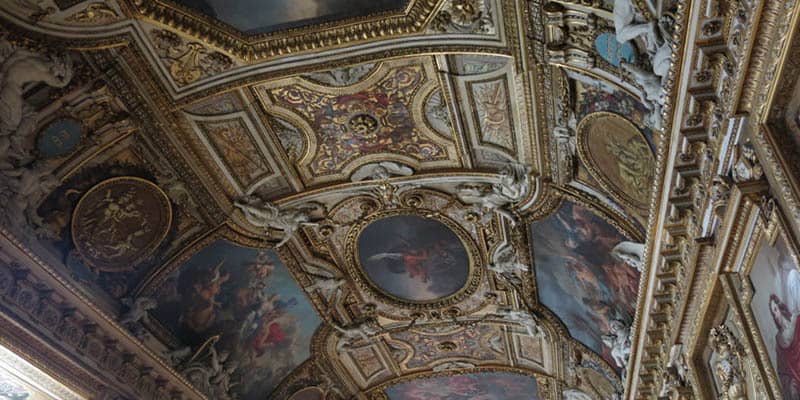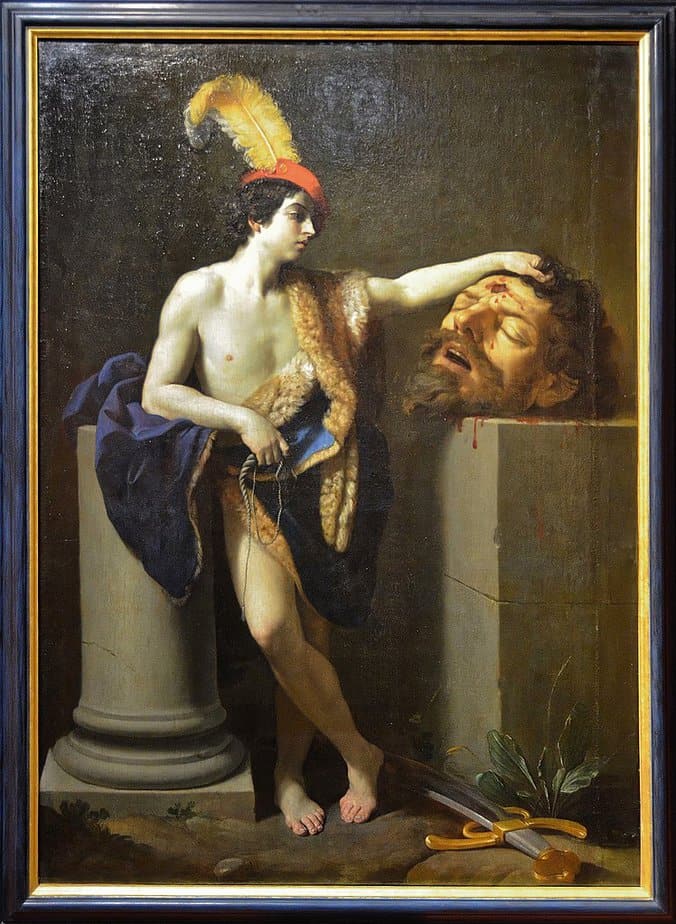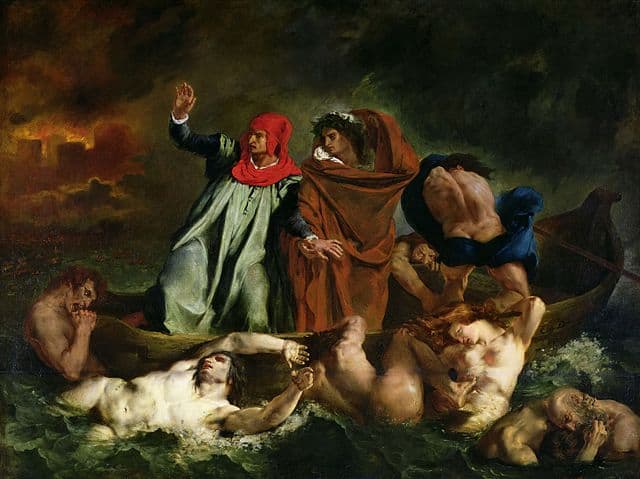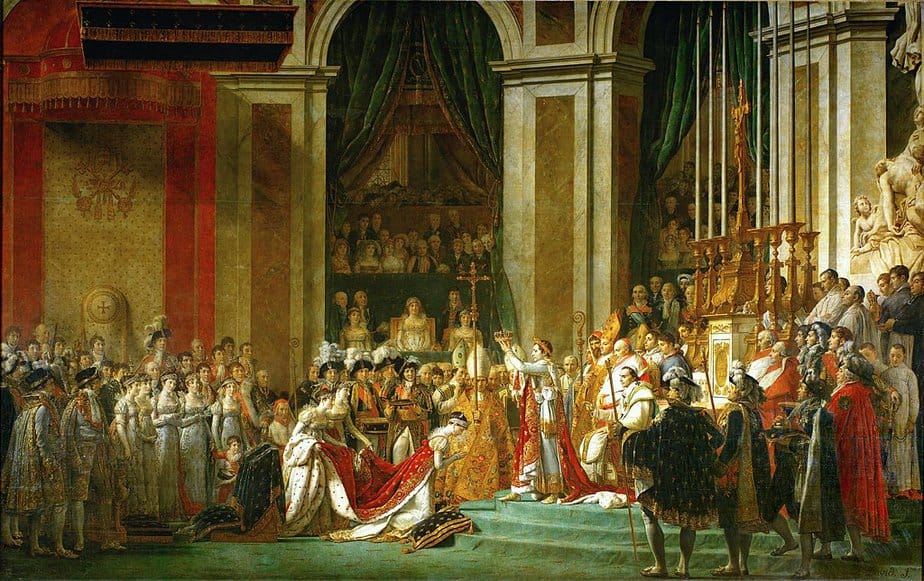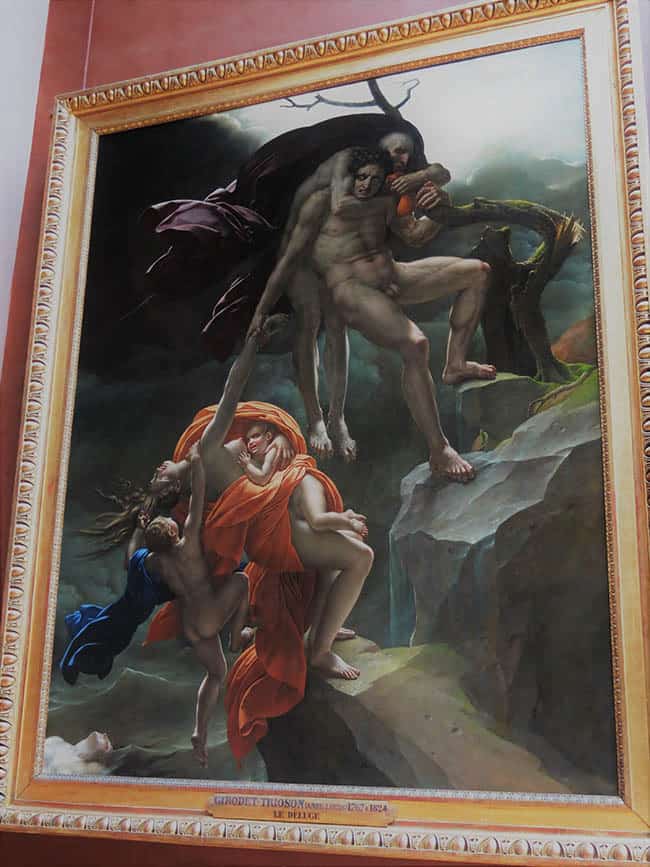Top 20 Paintings to See in the Louvre Museum
Updated by Farah in June 2022 and by Felix in May 2023
If you’re coming to Paris, the Louvre is probably on your to-do list. You also probably want to see, more than anything else, the most famous painting in that particular museum: the Mona Lisa. A portrait painting created by Leonardo da Vinci. Many people only come to the Louvre just to see this enigmatic lady. And that is quite understandable.
It is, after all, the most famous and the most visited museum in the world thanks to this painting. Plus, the painting is also considered to be the most valuable work of art ever. So, whenever people come to the Louvre, they rush towards her and have a couple of selfies with her! ;) If you want to know the best way to see the Mona Lisa, check this article!
My advice, if you want to have a look at her portrait in peace, is to come to the Louvre at the opening hour. The early bird catches the worm. If you want to fully enjoy the Louvre Museum, you’ll definitely have to come as early as possible. The Louvre Museum is the biggest museum in the world and has many art treasures you absolutely need to see.
I love Paris and I love all the art and culture it has to offer. So, I went -once again- to the Louvre and I’ve came up with a list of my favorite paintings. Read on to find out my Top 20 Paintings in the Louvre Museum.
1. “Le portement de la croix” by Biagio d’Antonio
First, on my top 10 paintings in the Louvre Museum is “Le Portement de la Croix” by Biagio d’Antonio. Biagio d’Antonio is an Italian Renaissance artist, who also contributed to the decoration of the Sistine Chapel. “Le Portement de la Croix” is believed to have been produced between 1480 and 1520. It entered the Louvre Museum in 1814.
The painting depicts the moment Jesus had to carry his cross to his own crucifixion. This piece of art is on my list for several reasons. There are many intriguing details. For instance, it is said that Jesus was tortured and whipped before his execution, but in this painting, he appears well-dressed and strong by the way he carries his cross.
Those who believe and support him are on the right side of the painting, they walk behind Jesus, and those who despise him are on the left side of the painting, walking in front of him. But the most striking detail, the one detail that caught my attention, is the look Jesus and his mother exchange. Jesus is looking at his mother as he walks to his execution. It’s as if they were saying goodbye to one another with great sadness. It’s a religious painting, but we can feel the despair and the love between the mother and the son.
2. “David with the Head of Goliath” by Guido Reni
Italian painter Guido Reni classical painting could be inspired by his training under Carracci and with models of Raphael. Guido, who was an accomplished artist, later enrolled at the renowned Accademia degli Incamminati, a painting school in Bologna. He followed in the footsteps of the great Masters of the 16th century by focusing on anatomy and life drawing.
In this painting created in 1605(!), you see the end of the epic Biblical tale of David and Goliath. We see the triumphant David with the severed head of the giant Goliath. David’s pose and flair with the feathers and fur gives him a melancholic expression of contemplation, in the style of Carravagio and his painting methods. His lit body contrasts with the darker background as he meditates on what he’s done and what remains in his hands. Is he now just a shephard or something more after this bloody encounter?
However, this is just one of the copies of the same painting you can find across museums in Europe. But don’t miss out on this painting in the Louvre Museum!
3. Dante and Virgil in Hell by Eugène Delacroix, also known as The Barque of Dante
Created in 1822, Delacroix depicts hell and we’ve got Dante Alighieri to thank for. His work, The Divine Comedy and artworks like this particular painting of Delacroix gives us the terrified notion of what hell would look like. It is Delacroix’s first big painting in the Romanticism style. To gain entrance into the Paris Salon of 1822, Delacroix worked non-stop for two and a half months on this painting! The same year, the state purchased it for 2,000 francs and moved it to the Museum of Luxembourg. Seven years after Delacroix’s death, it moved permanently to the Louvre.
It is a scene from Dante’s epic poem The Divine Comedy, written in 1319 CE. It can also be said that the painting’s scene is loosely based on canto eight of Dante’s Inferno, the first part of the Divine Comedy. A blaze in the background form the backdrop to the poet’s tormenting crossing of the River Styx in the underworld, hence the tormented souls in the foreground.
Also titled The Barque of Dante, this painting depicts men neither alive nor dead, floating in an ocean or river with demons. Dante is depicted in a red cap along side the Roman pagan Virgil beside him, experiencing hell together. What a sight, what terror! Don’t miss it at the Louvre!
Find out The Best way to visit the Louvre Museum
4. Coronation of Napoleon (1807) by Jacques-Louis David, also called Le Sacre de Napoléon
A beautiful Neoclassicism painting done in white, gold with red and green tones, the Coronation of Napoleon depicts everyone important present at the Notre Dame for this important event! Napoleon, dressed as a Roman emperor, with a crown, is the centre of attention in this painting.
You see the (seated) Pope in attendance, Napoleon’s mother, his brothers and sisters and noble courtiers are present and with solemn expressions. In total there are 204 faces and depictions in this painting. It’s a significant painting with an interesting history given that Pope Pius VII was not very fond of Napoleon and was only there given the Papal defeat in 1796 and Napoleon’s takeover of Rome.
5. “Scène de déluge” by Anne-Louis Girodet de Roussy-Trioson
Next on my top 13 paintings in the Louvre Museum is “Scène de déluge” by Anne-Louis Girodet, a French painter. I think it is a very strong painting. It entered the Louvre Museum in 1818. And it is huge! It is really impressive, be it for its dimensions or for its details, the perspective and the story it tells.
The “déluge” is a biblical cataclysm. In English, it is the Flood. God was unhappy with His creation, He was disappointed with men. So, He decided to destroy everything He had created. Usually, paintings that depict the Flood often present Nature uprising. So we often see gigantic paintings showing extremely rough seas and tiny men trying to save themselves.
But in “Scène de déluge” by Anne-Louis Girodet, we have a completely different perspective. We see a family trying to survive as best as possible. We can see that the whole family relies on the family man – young and strong – that has to carry all the weight of his family, from his father to his elder child. The family is desperate and tries to hold on to each other as hard as they can, otherwise, they will face the same end as the woman at the bottom left of the painting, who’s already dead.
6. “Une odalisque” by Jean-Auguste-Dominique Ingres
This painting was ordered by Napoleon’s sister, Caroline of Murat, queen of Naples. “Une odalisque” was finished in 1814. When it was first exhibited, it was criticized. According to the people of the time, the woman’s body was not realistic. It did not correspond to the real female body. Because some limbs are just too long.
At some level, these comments might be true. But one cannot ignore the fact that it is a very beautiful and sensual painting anyway. One gets hypnotized by the exotic looks of the odalisque.
7. “La liberté guidant le peuple” by Eugène Delacroix
If you come to Paris, you have to see this painting as much as you need to see the Mona Lisa. If this painting was not in your “to-see list” yet, you can add it now. Next on my top 20 paintings in the Louvre Museum is “La Liberté guidant le peuple” by Eugène Delacroix.
This painting depicts the July Revolution in Paris, also known as “Les Trois Glorieuses” in French. During three days, the people rose up against King Charles X and his ordinances that were to suppress Liberal opposition and some civil liberties.
“La Liberté guidant le peuple” illustrates glorious and free Parisians who fought for their rights, in the city of Paris. We can see it takes place in Paris because of the Notre Dame in the background. The painting symbolizes the French way of thinking. People who always speak their minds and stand for what they believe in. In the painting, freedom is represented by the woman in the center. She embodies the victory and the sovereignty of the people. There is so much more to tell about this piece of art, that is why you should absolutely see it live in the Louvre Museum.
8. “La présentation au temple” by Ambrogio da Fossano, also known as Il Bergognone
Ambrogio da Fossano is another Italian Renaissance artist. This set of paintings is believed to have been made around 1494. The centerpiece is called “La présentation au temple”, the left one is called “Saint Augustin et un donateur agenouillé” and the right one is “Saint Pierre martyr et une donatrice agenouillée”. It entered the Louvre Museum in 1863. You can have a look at this set, in the Louvre Museum, on the 1st floor in the Denon alley.
I really loved this artwork for two reasons. Firstly, because of the fact that it is divided into three different paintings. I think it is pretty unique and original. Secondly, because of the choice of colors – it is mainly dark and cold colors with a few warm ones. It gives Ambrogio da Fossano’s piece of art a one-of-a-kind atmosphere.
9. “Saint Paul Ermite” by Jusepe de Ribera
Jusepe de Ribera was a Spanish Tenebrism artist. He used strong contrasts of light and darkness to produce dramatic effects in his paintings. “Saint Paul Ermite” dates from 1625 and entered the museum in 1875. The first time I saw “Saint Paul Ermite” in the Louvre Museum, it instantly caught all my attention and I spent several minutes looking at the painting. The “chiaroscuro” technique is truly mesmerizing and carried out to perfection.
The character in the painting is Saint Paul Ermite. He was one of the first Christians to flee to the Egyptian deserts from the persecutions. Legend has it that a crow used to come and feed him in his cave.
10. “Le cardinal Melchior de Polignac visitant Saint-Pierre de Rome” by Giovanni Paolo Panini
This painting is so impressive! I was astonished by the amount of detail in “Le cardinal Melchior de Polignac visitant Saint-Pierre de Rome”. I’m sure you will love it as much as I do. Moreover, in the same room, you will find three other paintings by the same artist. They all depict scenes of Rome.
Giovanni Paolo Pannini is an Italian painter and architect, but he’s most famous for his veduta, which are paintings of a town or a city.
11. “Les 4 Saisons” by Giuseppe Arcimboldo
Arcimboldo was a 16th-century Italian mannerist. He is famous for creating original portraits using different objects, such as fishes, vegetables, flowers and fruits. So his masterpiece “The Four Seasons” had obviously to be on my list.
I’ve already talked to people who hated his creations, thinking it was kind of creepy and somewhat disturbing. But, in my opinion, it is very original and outstanding. I find it very funny and it reminds me of some sort of collage. It is definitely a must-see at the Louvre Museum.
12. “Magdalena-Bay” by François Biard
François Biard was a 19th-century French painter. In 1839, the artist went on a scientific expedition in the Arctic. When he came back, he created several landscape paintings. But this one must be by far his most extraordinary.
In this painting, Biard allies beauty with death, close to perfection. The castaways are trapped in the ice at the forefront, while we can witness the beauty of the aurora borealis in the background.
Discover: How to enjoy your Louvre museum tour
13. “Scène de la Saint-Barthélemy” by Joseph-Nicolas Robert-Fleury
“Scène de la Saint-Barthélemy” was produced by Joseph-Nicolas Robert-Fleury in 1833. It depicts the St. Bartholomew’s Day massacre in 1572 that took place during the French Wars of Religion in Paris. It was a targeted group of assassinations against the Protestants on Saint Bartholomew’s day.
The painting entered the Museum in 1833. It is part of my top 20 paintings list because the facial expressions of the characters and the precision of the brushstrokes are stunning. All the details on the characters faces are breathtaking. It is as if the artist was there to witness the scene himself. That is why I consider this painting worth the look!
14. The Pastoral Concert by Titian

Louvre Museum, Public domain, via Wikimedia Commons
The ‘Pastoral Concert,’ or should we call it ‘Fete Champetre,’ is an amazing painting that was created in the sixteenth century. The man behind this piece of art? Who else other than the Italian Renaissance, Titian? Inspired by ancient Greece, the painting has been interpreted differently today.
The painting has four visible figures that can be described in a million ways. Four people in the painting, two men seated on the grass while two women standing next to them, naked, is a talking point. Either way, this painting was an illusion in the sixteenth century. First, one woman playing a musical instrument could mean many things. One, she is telling us how women were talented in the century or how they were a source of entertainment to men. The other woman is holding a jar of water. Perhaps the simplest meaning would be life because the water in the jar represents life.
Do you know Amazing Facts About Art? Click here
This image was brought to the French Museum in 1792 during the French Revolution and has become an attractive scene in this building.
Nevertheless, the painting depicts rich, fertile land with trees in the background. Titian uses light and color in this beautiful oil paint on canvas. He uses shadows to show the presence of the sun, shining on trees and objects that produce shadows. This is realism. Above all, the image celebrates love and music, among other interpretations.
15. The Turkish Bath by Jean-Auguste-Dominique Ingres
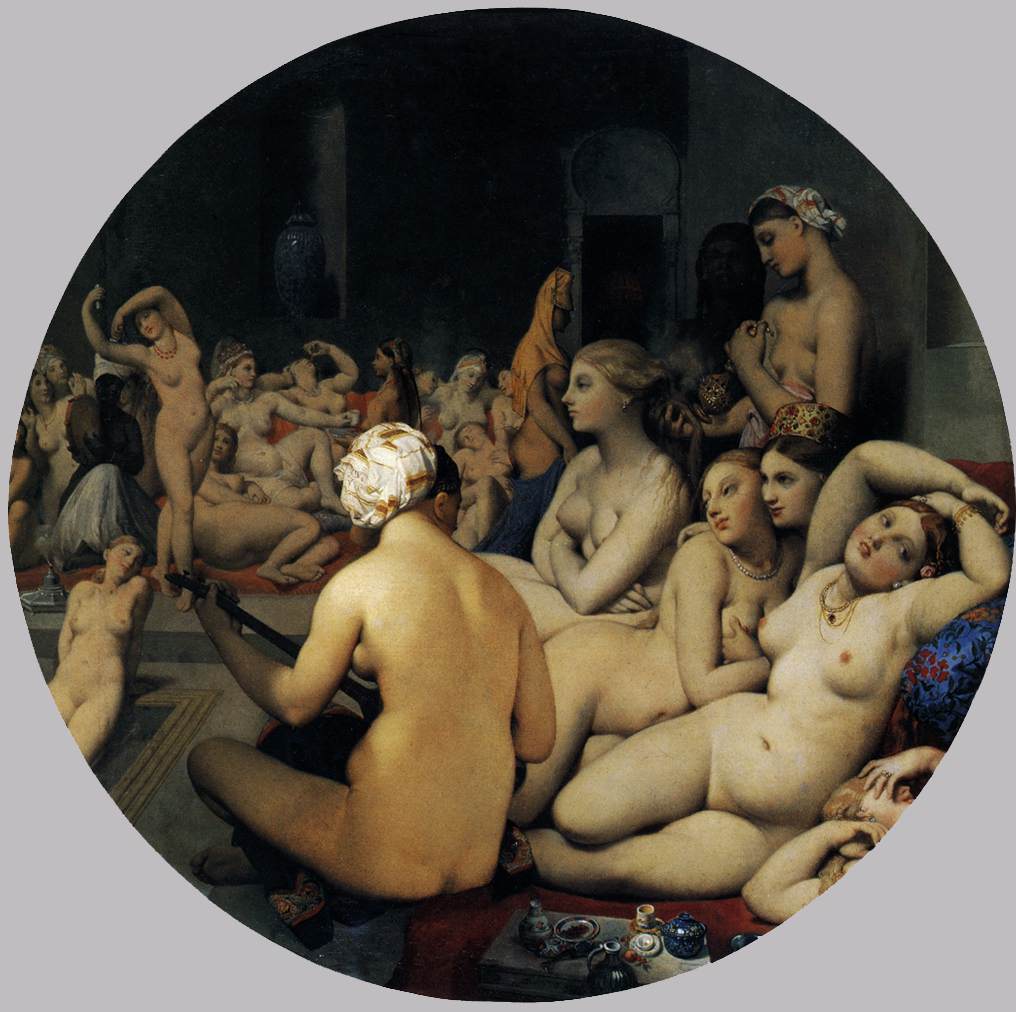
Jean Auguste Dominique Ingres, Public domain, via Wikimedia Commons
Jean-Auguste-Dominique Ingres created the Turkish Bath painting in the early nineteenth century. The painting evoked a series of interpretations because of the pictures and lighting that this man used to create the masterpiece. Ingres had several other famous paintings during his career, but the Turkish bath stands out because it was created at the end.
In the painting, a group of nude women, assumedly of Turkish descent, are in a bathhouse. Ingres shows his skills and mastery of the human body when he paints the features of these women with accuracy and precision. The foreground of the painting has two women, one standing while the other seated on the floor. The women are turning towards the viewer as if suggesting for the viewer to see everything they have.
The painter added a few other women in the background, seated and standing in different postures for the viewer. The bathhouse has decorated rooms with bath tabs, basins and other ornaments. Ingres must have used the marble to depict the hard texture, while the women’s skins show the softness.
Although the painting caused controversies for years, it has since been seen as a masterpiece of the ancient days. The painting was introduced in the louvre museum in 1904 as a donation by the Duke of Blacas, and it attracts visitors from other parts of the world.
16. The Mona Lisa By Leonardo da Vinci
If you are in Louvre Museum to see some of the most famous works of art, go through Denon Room to see the Mona Lisa painting. The Mona Lisa by Leonardo da Vinci is the most famous painting in the world since it was created. For some reason, some great artists have recreated the painting in several countries.
Lisa Gherardini, the wife of Francesco Del Giocondo, is the woman in the painting. But why is it the most famous painting in history? Da Vinci took time to create a woman with an enigmatic facial expression that would make her look twice. The painter uses the smile on her face to evoke emotions. You couldn’t possibly look at the Mona Lisa for a few minutes without changing your facial expression.
You will definitely smile along. Lisa is seated with her hands folded, showing the picture of a traditional woman. Like the Virgin Mary, Lisa is dressed in simple garments, showing humility. Her hair is covered in a veil, a practice in the ancient world. The Mona Lisa is possibly the most expensive Louvre painting today, considering the number of people who see it.
Unlike other historical paintings in the museum, such as the Venus de Milo, or the Toppled King Charles, the Mona Lisa is a more personal painting that tells the story of an ancient Italian woman.
This amazing painting was first brought to the Louvre Museum in the sixteenth century during the reign of King Francis I, who received it himself from Leonardo. If you are in Paris and possibly at the Musee de Louvre, check out the Mona Lisa.
Check out: How to make sure you enjoy your Mona Lisa visit at the Louvre
17. The Raft of the Medusa by Theodore Gericaut
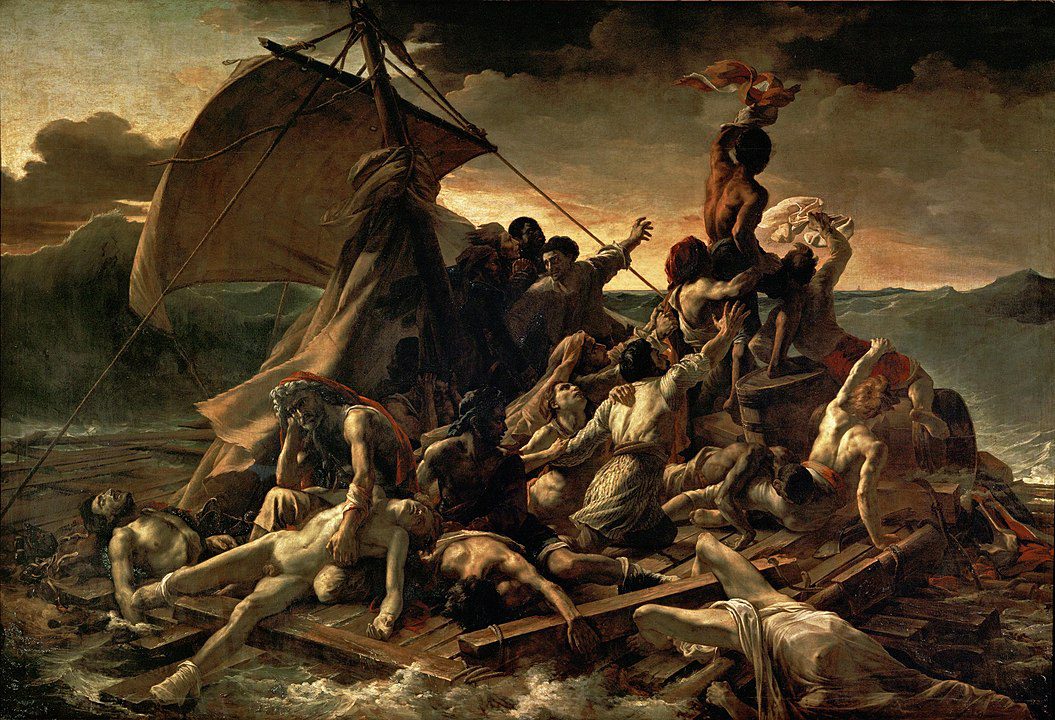
Théodore Géricault, Public domain, via Wikimedia Commons
Here is another eye-catching portrait of the Renaissance period inside the Louvre Museum, “The Raft of the Medusa.” Theodore Gericault created this painting in the early nineteenth century, beginning the painter’s fame. He was an artist of French Romanticism whose paintings represented the happenings in the society.
The ancient days were wars where nations fought for territories and power. The wars continued until World War I and World War II, when global peace and stability were established. In the picture, a group of people on a makeshift raft look stranded in a wavy ocean. Theodore’s work shows a sense of despair and fear among these war survivors, and the French naval ship Meduse has been destroyed and is on the verge of sinking. Historically, the ship sank on the coastline of Mauritanian in 1816, killing French soldiers.
The painting is famous for evoking political and social topics, as the captain was to blame for the wreck. You would see the realism in the painting as you can understand the context of the history of the portrait. Theodore made some dollars from his peace of work purchased by the French government a few years after completion.
Today, the painting is one of the half a million paintings in the louvre museum. Seating under one roof with other pieces like “the coronation of Napoleon,” the raft of the Medusa attracts more French viewers than other people worldwide.
18. The Lacemaker by Johannes Vermeer
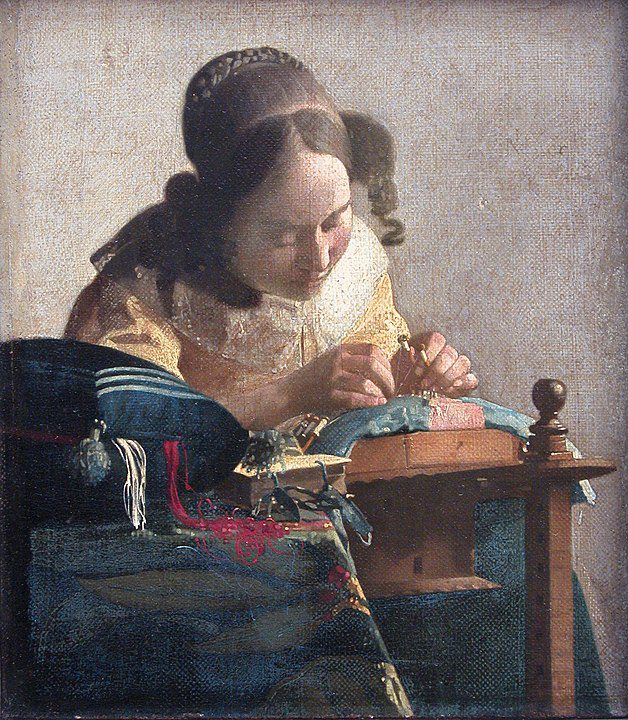
Johannes Vermeer, Public domain, via Wikimedia Commons
Johannes Vermeer created one of the paintings a few years before he died, and it has lived through centuries, “The Lacemaker.” the painting was completed in 1669 by this Dutch master. The painting gained fame over the years to the extent of being compared to other popular paintings and praised by art lovers.
A young woman is the main object in this famous piece of art, but what she is doing is also noble. The painter must have chosen a young woman to show that women had roles to play in society. In the painting, the woman is busy bending over her work and possibly not noticing the viewer. She holds bobbins and pins used for making laces and sewing other types of clothes. In this finest example of paintings in the Paris museum, Vermeer makes sure that the woman is immersed in her craft, which shows that she is skillful.
The woman’s yellow dress, the blue sewing cushion, the sewing machine and other items in the picture show the artist’s details. In this picture, he is sensitive to light and color, which evokes a series of emotions. Even the woman’s folded hairstyle depicts decency and simplicity in how people lived. This Louvre artwork is an encouragement to the women in society to engage in developing their nations. Vermeer was intentional with every detail of this stunning painting. You can have other interpretations, and that is fine.
The painting was made part of the paintings in the Louvre Museum two decades after its creation. The French government purchased the piece of art from Louise la Caze, a private collector with several other paintings.
Also see: 15 Famous Paintings of People
19. The Wedding at Cana by Paolo Veronese
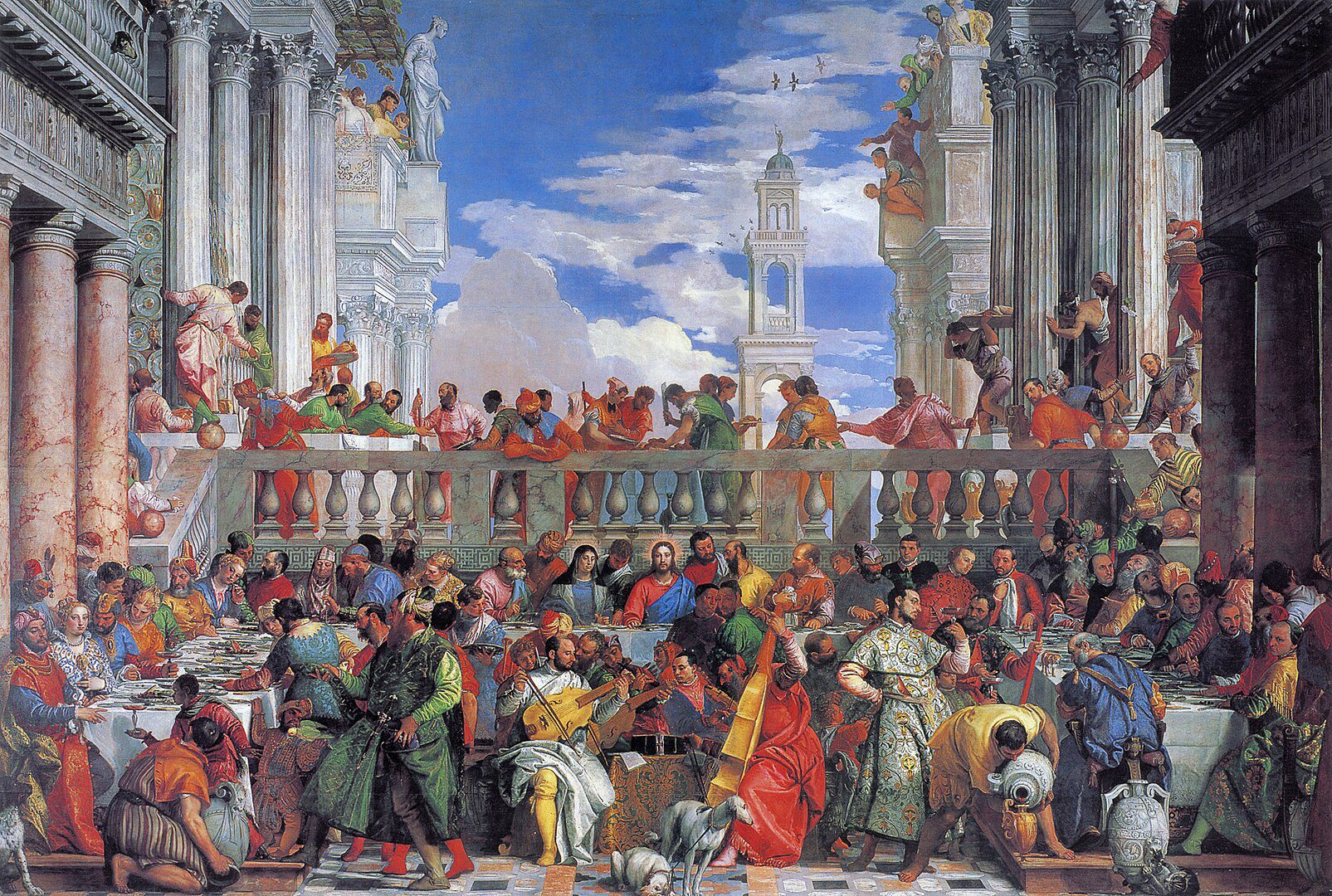
Paolo Veronese, Public domain, via Wikimedia Commons
Paolo Veronese created one of the biblical scenes about the life of Jesus Christ. Growing up in Venice, the Italian-born painter became popular after creating several famous artworks that have lived for centuries. One of these beautiful paintings is the ‘Wedding at Cana’ canvas painting which became a topic of discussion among Christians.
The 1653 painting of people at a feast in Cana, also referred to as the Marriage feast at Cana. The painter takes a story from the New Testament where Jesus performed his first miracle. The painting portrays a group of richly dressed people in a celebratory atmosphere. Veronese intentionally places the bride and the groom at the center of the crowd because they are the central attraction. Looking at the painting closely, you would notice other groups of people. For example, musicians on the ends play music to the guests. His use of light and color in this painting is fascinating.
Look at the bright and clear sky and see the artistic skills that Veronese offers the public. The painting is special for the attention to detail, the walls with various colors, and people wearing different shades and types of clothes.
This painting with a biblical scene was brought to France in 1798 during the Napoleonic Wars by the French government. The piece has remained a significant and beautiful attraction in the louvre museum and has continued enlightening people about the New Testament.
20. The Virgin, Saint Anne, and the Child Playing with a Lamb by Leonardo da Vinci
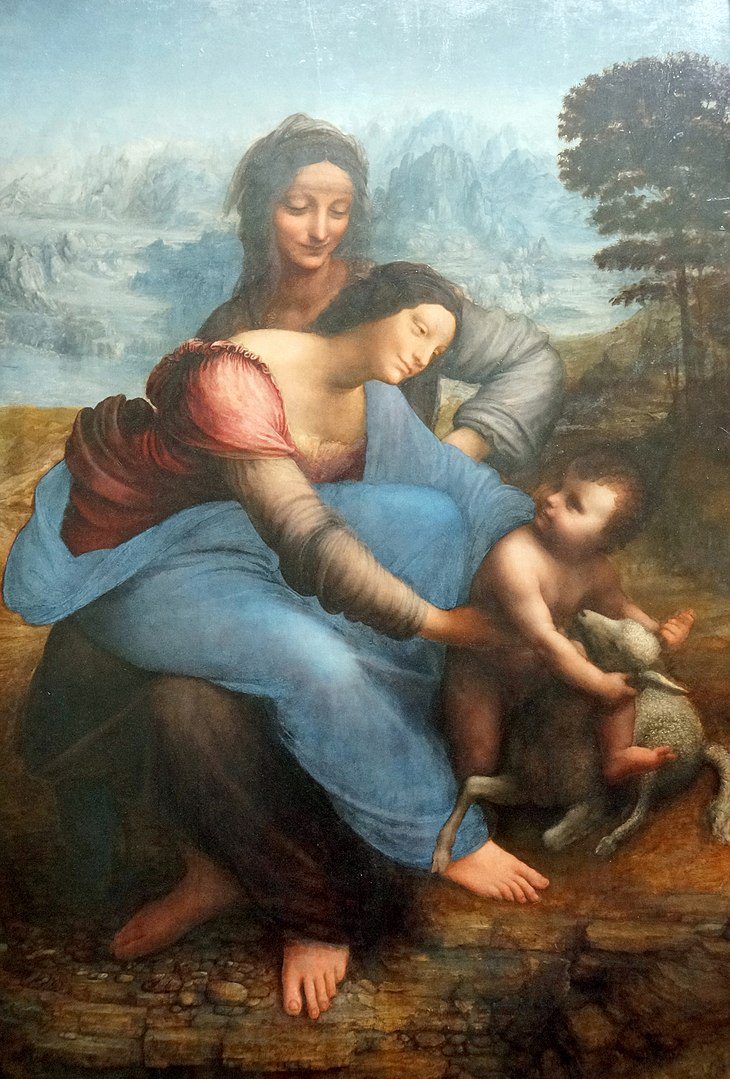
Dennis Jarvis from Halifax, Canada, CC BY-SA 2.0, via Wikimedia Commons
The original painting of the Virgin and Saint Anne with a child playing with a lamb is an ancient painting created by the Italian painter Leonardo da Vinci. He created several other paintings, including the Mona Lisa, the most famous painting in history. Some view “The Virgin, Saint Anne, and the Child Playing with a Lamb by Leonardo da Vinci” as more famous than the Mona Lisa. For some reason, they might be right.
In the painting, Saint Anne, her daughter, the Virgin Mary and baby Jesus Christ are in the field. The baby plays with a lamb while the two women watch closely behind him. Leonardo, once again, used emotions to capture people’s attention in this piece of art. Like the Mona Lisa, Saint Anne is seen smiling in the portrait, which will immediately capture your eyes. Christ struggles to grab the lamb while the Virgin Mary tries restraining him.
Something notable in the painting is motherhood and the mother’s love. Notably, the Virgin Mary seats on Saint Anne’s lap. On the other hand, Saint Anne looks at her daughter with a lovely smile. Leonardo also uses light in the portrait with the lush landscape and trees surrounding these three people. There are parallels between this painting and “Madonna and a Child with Saints,” created by the Italian artist Pietro Perugino.
The painting shows Leonardo’s skills in using light and shadow to create a deep shape of an image. The French government first introduced the painting in the louvre museum in 1797. The piece was brought into the country during the Napoleonic Wars when the French military invaded Italy and looted several precious items, including art pieces. The painting continues to attract people in the Denon room alongside several other European art showing European history.
The best way to see The Venus de Milo at the Louvre Museum
My top 20 paintings in the Louvre Museum is now over! I hope you’ve enjoyed it! Feel free to share your thoughts and tell me which ones were your favorite too! If you want to know more about the Louvre Museum, you should definitely read this article. Some useful tips are provided for you, so make sure you enjoy the city and its landmarks in the best conditions!
How to buy tickets for Le Louvre?
Last but not least, the Louvre entrance is always incredibly crowded and the queues can be really long! You can purchase tickets directly at the ticket office or you can buy advanced tickets for any day with our partner Tiqets (smartphone tickets).
See you soon in Paris!
Planning a trip to Paris ? Get ready !
These are Amazon’s best-selling travel products that you may need for coming to Paris.
Bookstore
- The best travel book : Rick Steves – Paris 2023 – Learn more here
- Fodor’s Paris 2024 – Learn more here
Travel Gear
- Venture Pal Lightweight Backpack – Learn more here
- Samsonite Winfield 2 28″ Luggage – Learn more here
- Swig Savvy’s Stainless Steel Insulated Water Bottle – Learn more here
Check Amazon’s best-seller list for the most popular travel accessories. We sometimes read this list just to find out what new travel products people are buying.

